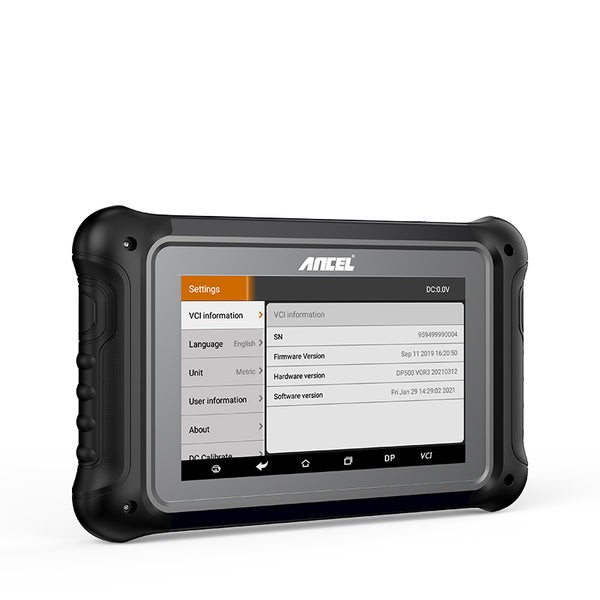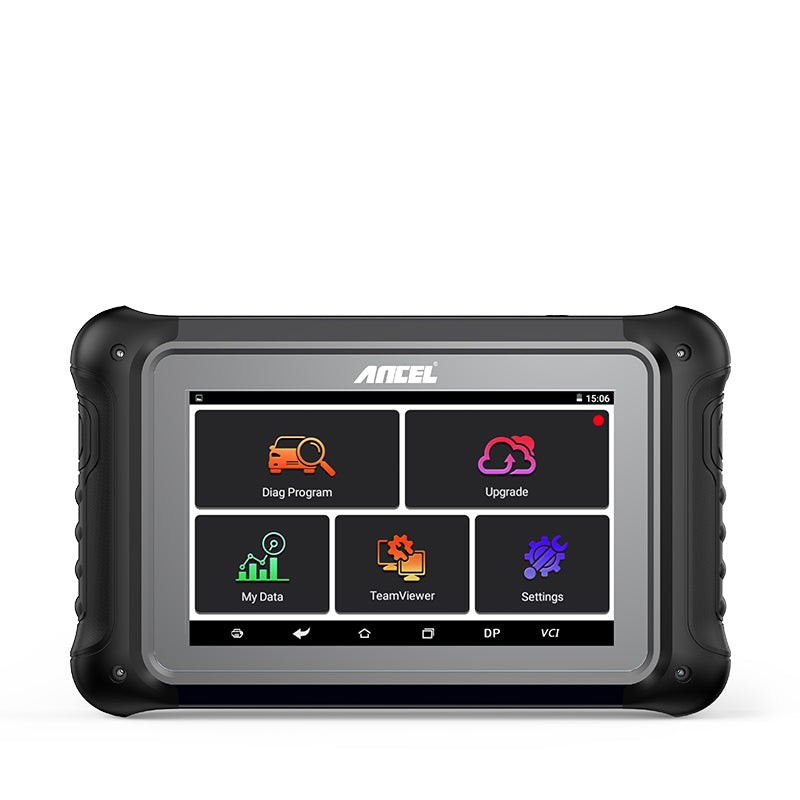Losing or damaging your car keys can be a stressful and inconvenient experience. Traditionally, key replacement and programming meant a trip to the dealership, often resulting in high costs and significant delays. However, with advancements in automotive technology, OBD2 scanners with key programming capabilities have emerged as a game-changer, offering a more accessible and efficient solution. This article delves into the world of OBD2 key programming, exploring its methods, benefits, and how it empowers both car owners and professionals.
Understanding Key Programming Methods
Programming a car key involves more than just cutting a physical copy; it requires electronically pairing the key with your vehicle’s immobilizer system. This ensures that only authorized keys can start your car, enhancing security and preventing theft. There are several methods to achieve this, each with its own advantages and applications.
Different Key Programming Approaches
-
Onboard Programming: This is often the simplest method, relying on the vehicle’s built-in computer system. It typically involves a sequence of steps performed inside the car, such as turning the ignition on and off in a specific pattern or pressing certain pedal combinations. Onboard programming is often detailed in the vehicle’s owner’s manual and can be a convenient DIY solution for adding basic keys or fobs, especially for older models.
-
OBD2 Programming: The Modern Solution
OBD2 (On-Board Diagnostics II) programming has become a prevalent and efficient method for key programming in modern vehicles. It utilizes the standardized OBD2 port, usually located beneath the dashboard, to communicate directly with the car’s computer. An Obd2 Scanner With Key Programming functionality connects to this port, acting as an interface to send commands and data to the vehicle’s immobilizer system.
 ANCEL DP500 makes key programming easy
ANCEL DP500 makes key programming easyBenefits of OBD2 Key Programming:
- Efficiency: OBD2 programming is generally faster and more streamlined than other methods, reducing downtime and labor costs.
- Versatility: Many OBD2 scanners with key programming are compatible with a wide range of vehicle makes and models, making them a versatile tool for professionals and enthusiasts alike.
- Advanced Functions: Beyond basic key adding, advanced OBD2 scanners can perform functions like all keys lost programming, remote programming, reading key PIN codes, and even immobilizer system diagnostics.
- Cost-Effective: Utilizing an OBD2 scanner with key programming can often be more affordable than dealership services, especially for independent repair shops and car owners who prefer DIY solutions.
-
“On-Bench” or EEPROM Programming: This more complex method is typically reserved for situations where OBD2 programming is not possible or when dealing with heavily secured or older vehicles. It involves physically removing the vehicle’s ECM (Engine Control Module) or immobilizer unit and directly accessing its EEPROM (Electrically Erasable Programmable Read-Only Memory) chip. Specialized equipment is then used on a workbench to read, modify, and write data to the EEPROM, effectively programming the keys. On-bench programming requires specialized skills and equipment and is generally performed by professional locksmiths or experienced automotive technicians.
Programming Your Car Key Fob: A DIY Guide
For certain vehicles and key fobs, DIY programming at home is possible, potentially saving you money and time. However, it’s crucial to approach this carefully and ensure compatibility.
- Check Compatibility: Before attempting DIY programming, meticulously check your vehicle’s owner’s manual or online resources to confirm if your car model and year support onboard DIY key fob programming. Compatibility varies significantly between manufacturers and models.
- Gather Materials: Ensure you have all necessary items, which usually include the new key fob, your existing working key (if available), and any specific programming instructions or codes provided with the new fob or by the vehicle manufacturer.
- Access Programming Mode: The process to enter programming mode differs based on your vehicle. Common methods involve inserting and removing the existing key from the ignition cylinder multiple times in a specific sequence, or pressing designated buttons on the door panel or dashboard. Refer to your vehicle’s manual for precise steps.
- Program the Key Fob: Once in programming mode, follow the manufacturer’s instructions to program the new key fob. This often involves pressing buttons on both the existing key (if applicable) and the new key fob in a specific order and duration. Patience and accuracy are key during this step.
- Test the Key Fob: After completing the programming steps, thoroughly test the new key fob’s functionality. Verify if it correctly locks and unlocks doors, opens the trunk, activates the panic alarm, and starts the vehicle (if it’s a transponder key).
- Exit Programming Mode: Once you’ve confirmed the key fob is working, exit programming mode as per your vehicle’s instructions. This might involve simply turning off the ignition, removing the key, or pressing specific buttons to finalize the process.
- Repeat if Necessary: If you have multiple key fobs to program, repeat the above steps for each additional fob, ensuring each one is programmed correctly before proceeding.
- Store Instructions Safely: Retain a copy of the programming instructions and any associated codes in a safe place for future reference, should you need to program more keys or reprogram existing ones.
 Professional auto repair mechanic inspecting car
Professional auto repair mechanic inspecting car
Can You Program a Key with Just the VIN?
While the Vehicle Identification Number (VIN) is a unique identifier containing crucial vehicle information, it’s generally not sufficient to program a key on its own. Key programming requires specific security access and data exchange with the vehicle’s immobilizer system, which goes beyond the information encoded in the VIN.
Key programming processes typically necessitate either:
- An existing, programmed key: In some cases, the vehicle’s system allows adding new keys if a working key is present. The existing key acts as a form of authorization to program a new one.
- Access to the vehicle’s OBD2 port and appropriate tools: OBD2 scanners with key programming capabilities are designed to communicate with the car’s computer via the OBD2 port, bypassing the need for an existing key in many situations, particularly for professional key replacement and “all keys lost” scenarios.
Although some locksmiths or specialized services might be able to obtain key codes based on the VIN for certain vehicles, this is not a universal solution and may still require physical access to the vehicle for the actual programming procedure. Relying solely on the VIN for key programming is generally not feasible.
The Best OBD2 Scanner for Key Programming: ANCEL DP500
For those seeking a powerful and versatile OBD2 scanner with key programming capabilities, the ANCEL DP500 stands out as an excellent choice. This professional-grade tool is designed to streamline vehicle diagnostics and key programming tasks, offering a comprehensive suite of features for automotive professionals and serious DIYers.
 Car Scanner | ANCEL
Car Scanner | ANCEL
Alt text: ANCEL DP500 OBD2 scanner with key programming and diagnostic functions, displayed with brand logo.
Key Features of ANCEL DP500 for Key Programming:
- Extensive Key Programming Functions: The DP500 empowers users to effortlessly add and erase keys, perform all keys lost programming, program remotes, read key numbers and PIN codes, and match remotes across a wide range of vehicle brands.
- Comprehensive Diagnostic Capabilities: Beyond key programming, the DP500 functions as a full-system diagnostic scanner, offering 11 special reset services, including oil reset, ABS, gear learning, CVT reset, battery reset, EPB adaptation, TPS adaptation, steering angle reset, and more.
- User-Friendly Interface: The DP500 features an intuitive interface, making it easy to navigate through menus and perform complex procedures efficiently.
- Wide Vehicle Compatibility: ANCEL DP500 boasts broad vehicle coverage, supporting numerous makes and models, ensuring versatility for various automotive applications.
- Ample Storage and Performance: With 16GB of onboard memory and support for up to 32GB SD cards, the DP500 offers substantial storage capacity for diagnostic data and software updates, ensuring smooth and rapid operation.
The ANCEL DP500 is a valuable investment for automotive professionals and enthusiasts seeking a reliable and feature-rich OBD2 scanner with key programming to enhance their diagnostic and repair capabilities.
How Long Does Key Programming Take?
The time required for key programming using a key programmer, including OBD2 scanners with key programming, can vary depending on several factors:
- Complexity of the Task: Basic tasks like adding a key can typically be completed within 5 to 15 minutes. However, more complex procedures such as all keys lost programming, which involves reprogramming the entire immobilizer system, can take significantly longer, ranging from 30 minutes to 2 hours or more.
- Efficiency of the Key Programmer: Advanced OBD2 scanners with key programming, like the ANCEL DP500, are designed for speed and efficiency, often reducing programming times compared to less sophisticated tools.
- Vehicle Make and Model: Some vehicle manufacturers have more intricate security systems or require more steps for key programming, which can extend the overall duration.
- Availability of Information: Having readily available key codes, PIN numbers, and access to manufacturer-specific data can streamline the process and reduce programming time.
Despite these variables, modern OBD2 scanners with key programming and skilled technicians ensure that key programming is generally performed efficiently, restoring your vehicle’s key functionality securely and reliably.
FAQs
What tools are used for key programming?
Specialized key programmers are the primary tools for key programming. These can range from handheld devices and dedicated key programming tools to versatile OBD2 scanners with key programming functions and software-based solutions. They communicate with the vehicle’s computer systems to manage keys.
Can I program keys myself, or do I need a professional locksmith or dealership?
Simple key fob programming might be possible at home for certain vehicles. However, for complex key programming, especially involving transponder keys, immobilizer systems, or “all keys lost” scenarios, it is generally recommended to seek assistance from a professional locksmith or dealership who possess the expertise and specialized OBD2 scanners with key programming equipment.
How long does key programming take?
Key programming duration varies from a few minutes for simple tasks to potentially a couple of hours for more complex procedures like all keys lost programming. Factors like the tool used, vehicle type, and task complexity influence the overall time.